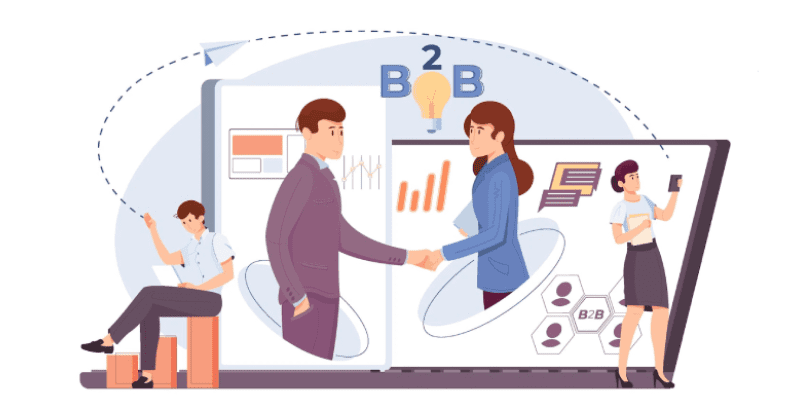
The marketing strategies for B2B business can vary on the basis of different fields. Now you might have a question in your mind, what is intent marketing? The answer is very simple. Intent marketing is a strategy that focuses on understanding a customer’s purchase journey and intentions. This intent-based marketing strategy helps to identify, engage, and convert customers by analyzing their intent and creating personalized experiences.
As you may already know, what’s b2b marketing? Based on the preceding facts the use of intent marketing. It is an effective way to target potential customers and increase B2B business growth.
Intent data marketing helps to identify and understand a customer’s purchase journey and intentions. It is a marketing strategy focusing on understanding customers’ b2b intent data and creating personalized experiences for them. Intent marketing examples help to target potential customers and increase business growth. It is an effective tool for B2B businesses to engage and convert customers.
Here, We’ll discuss 6 ways to adopt intent marketing for your B2B business growth:
- Identifying Buyer Intent: The first step towards marketing intent is to identify the intent of buyers. You can analyze customers’ digital behavior, such as website visits, social media posts, and search intent marketing. This data can be used to understand the customer’s needs and interests. Additionally, customer feedback surveys and interviews can be used to identify customer intent.
- Developing Buyer Personas: Once you have identified the buyer’s intent, developing buyer personas is next. Buyer personas are semi-fictional representations of customers based on customer demographics and behavior by the b2b intent data providers. Buyer personas help to understand customer needs and interests and create personalized experiences for them.
- Prioritize customer engagement with relevant content: Once you have identified the buyer intent and developed buyer personas, the next step is to prioritize customer engagement with relevant content. In an intent marketing funnel, content should be targeted to the specific customer and tailored to the customer’s needs and interests. Content should be engaging and should provide value to the customer.
- Utilizing AI-driven Automation: You can use AI-driven automation to identify customer intent marketing and create personalized experiences. AI-driven automation can automate customer segmentation, content creation, and engagement processes. It will help to save time and resources and increase efficiency.
- Utilize data to optimize campaigns: Data is an important tool for high intent marketing. You can use data to optimize campaigns and target potential customers. You can use data to identify customer intent, segment customers, and create personalized experiences. You can also use data to measure the success of campaigns and make adjustments accordingly.
- Leveraging Intent Data: You can use intent data to identify customer intent and create personalized experiences. Intent data can be obtained from various sources, such as website visits, social media posts, and searches. This data of purchase intent marketing can be used to understand customer needs and interests and create personalized experiences.
Conclusion:
At the end of this article, you may already be aware of intent marketing meaning and what is search intent marketing? Intent marketing b2b is an effective way to identify and engage potential customers and increase B2B business growth. The key to success is to identify customer intent, develop buyer personas, prioritize customer engagement with relevant content, utilize AI-driven automation, use data to optimize campaigns, and leverage intent data. By following these steps, B2B businesses can increase their growth and maximize their success.
